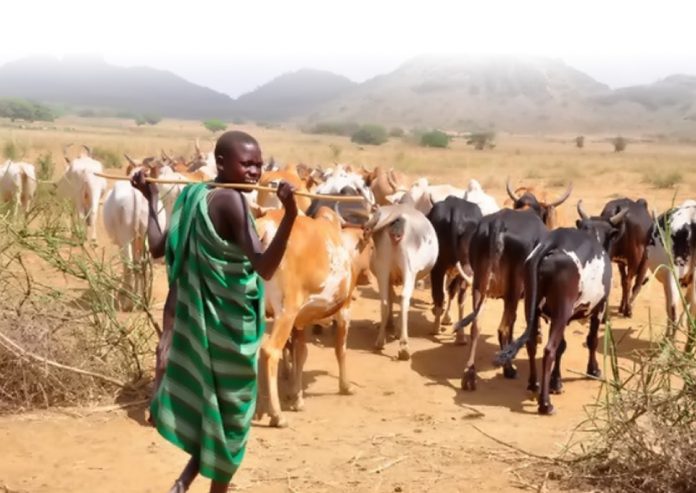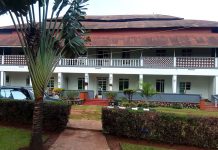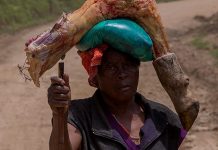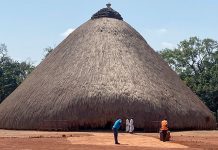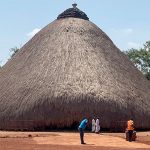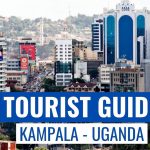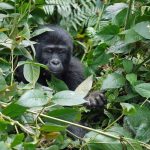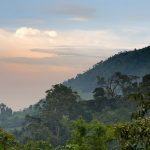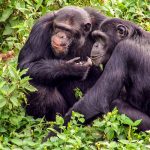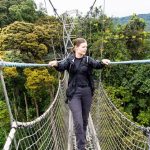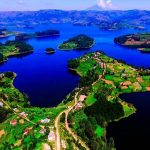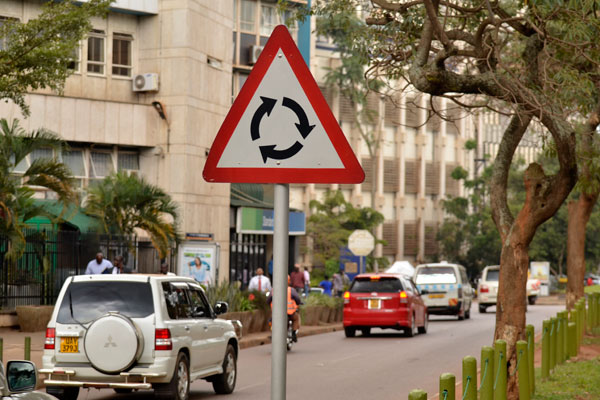When you think of Uganda’s tourism, what comes to your mind? Most tourists know Uganda for the Big five animals (Lions, Leopards, Buffaloes, Elephants and Rhinos), Primates like Mountain gorillas, Chimpanzees and several other primate species. But what is not known to many people is that Uganda is more beautiful and interesting, and offers more than just wildlife. There are many other interesting things to do that you can include within your Uganda safari itineraries! These include the rich cultural diversity comprising of customs, traditional, cultures that are passed on from one generation to another, and there are also physical features like Waterfalls and Caves that hold significant cultural meanings.
Some of the interesting cultural experiences worth visiting in Uganda include;
The Ik people of Mount Morungole
Hiking to the Valleys and Upper Slopes of Mount Morungole leads tourists to the “Mountain people of Uganda. This small tribe is found in North-Eastern Uganda, high up on Mount Morungole after Kidepo Valley National Park. The Ik are apparently the smallest tribe comprising or around 10,000 to 11,000 people. With their original ancient ways, you will leave the destination totally touched. Polygamy is a normal thing among the Ik people, their bride price is paid inform of Bee hives and goats, formal education is not valued because there is currently one graduate in the entire tribe and there is only one representative (first) in the Parliament of Uganda
The Batwa trail of Mgahinga National Park
This is one of the most interesting cultural experiences around Mgahinga National Park. The Batwa trail was introduced to allow the Batwa to showcase their lost culture and a way of making them earn a living since most of them are employed in the activities. The people used to call the Jungles of Bwindi and Mgahinga home before they were gazetted into national Parks in 1991. The Batwa people are rich with interesting cultural practices that include ancient way of making fire out of sticks, cultural performances, use of traditional herbs to treat common illnesses, making cups out of bamboo and interesting cultural dances among others. You should never miss a day with these Unique and interesting people.
The Bakonzo of Ruboni Cultural Village
This cultural Village is situated on the foothills of Rwenzori Mountains, where the Bakonzo people-known as the keepers of the mountains have lived for moiré than 250 years. This walk allows tourists to experience the day to day lifestyle and cultural practices of the Bakonzo and involves hiking to the traditional homesteads where more than 2000 Bakonzo call home, visit the elderly story tellers, visit the traditional healers and the blacksmiths and watch them use their intricate skills to transform shapeless pieces of iron into saucepans, knives and pangas among others, climbing Nyambuku Hill (2000 meters high) and enjoy a clear view of Margherita peak, you will also observe the locals tend to their animals and cultivate their crops using rudimentary tools like hoes, watch how traditional meals are prepared using fresh vegetables from their own gardens, participate in bird watching and nature walks where you will encounter opalescent sunbirds, Rwenzori Turaco, vivid bee-eaters, and Three-horned Chameleons among others, and the highlight of the walk is being entertained in traditional Bakonzo dances.
Bamasaba (Bagishu) Imbalu Ceremonies around Mount Elgon
The Bagishu are generally known as the “Bamasaba” or “Gishu” or “Masaba” and live along the slopes of Mount Elgon (also referred as Mount Masaba) mostly in Mbale, Bududa and Budadiri districts. One common cultural practice among these people is their unique “Male Circumcision” known as “Imbalu and is conducted during even-numbered years. These public Circumcision rites are conducted when boys are initiated into manhood, and according to their traditional beliefs, a boy only becomes a man after circumcision and even if you are 60 years, you will always remain a boy until you are circumcised. This practice involves candidates being smeared with yeast, ash or local brew and run around the villages, visit traditional sites like hills, swamps, caves while being accompanied by music and dancers, and make some sacrifices to the ancestors and call on some spirits. When the final part of circumcision approaches, the candidates have to stand brave (no fear, crying or even shaking) because this defines real men and “cowards” become the laughing stock of the Village, and no woman would wish to get married to a coward. Even men who shun the practice are forcefully subjected to it.
Karamajong Manyatta Visit near Kidepo Valley National Park
The Karamajong are Nomad warriors who live in the remote Karamajong region of Uganda which borders South-Sudan and Kenya. Other non-Karamajong Ugandans perceive these people as backward, uneducated and have a negative preconception against them because of their traditional lifestyle because they resisted formal education and modernization. These people still hang on to their traditional beliefs by depending on Akuj-the God of Calamity and their religion and reject outside religions like Islam and Christianity. Cattle are like a god to them because they live and die for their cattle and interestingly, they believe that their god Akuj gave them all the cattle in the world which explains why they are constantly raiding their neighbors’ cattle and are always on tribal wars. Cattle are considered Royalty to the Karamajong and is a measure of manhood-where a man’s wealth is valued based on how many cattle he owns. One of the culturally enlightening experiences of visiting these people is the mind-blowing Manyatta visit where you will be moved by the structures of the homesteads, villages, the people, their dressing and languages. While on this visit, also enjoy their generally way of life and the traditional dance that highlights your trip because of their unique high-jumping dances
The Sacred Nakayima witch tree in Mubende district (on your way to Kibale National Park).
This sacred witch tree is nestled on top of Mubende hill (2.13mters high) about 4km from Mubende Town, has a base with massive buttress roots and is believed to have existed for 400 to 600 years. This fall tree is about 40 meters high and was often used as a shrine of Spirits Nakayima-the first wife of Ndahura (the Bachwezi King). Local community members always visit the shrine to pay obeisance/homage to Nakayima spirits or the Bachwezi dynasty believed to have superhuman powers. Nakayima the goddess resided at this place and her notable power was the prevention and cure of small pox. Not only that, people visit when they need healing from ailments, barren women who want children, those seeking for good fortune, miracles in their relationships. The locals also bring offerings inform of food, cash, booze and exhale clouds of smoke through special pipes as a way of communicating with the spirits.
Amabere Ga Nyina Mwiru Caves in Fortportal
Visit the Amabere Ga Nyinamwiru Caves and enjoy the story on the legendary formation of these physical features. The legend surrounding these Caves is that they were named after “Nyinamwiru” a daughter of Baluku one of the ancient Kings of the Batembuzi Dynasty of the present Bunyoro and Toro Kingdoms. Due to her beauty/attractiveness, she was proud and rejected every suitor that her father chose hence prompting him to chop off her breasts from this Spot, and the dripping milk-like substances are believed to be milk from her breasts. Another myth that surrounds the caves is that a prophesy was told that Baluku’s daughter would give birth to a son (Ndahura) who would kill the King and take over his thrown, this made Nyinamwiru’s breasts to be chopped by her father. It is believed that the prophesy became true. However from the scientific point of view, these features are stalactites and stalagmites formed by weathering and the whitish substances are Calcium Carbonate. While in this area, you will enjoy the breathtaking caves, steaming sounds of Waterfalls inside the caves and three Crater Lakes (Lake Saka, Nyabikere and Lake Kigere)
Ssezibwe Falls
Ssezibwe Falls is a cultural heritage site situated along the highway from Kayunga Road in Mukono, 32 kilometers on the Kampala-Jinja highway. This is not just a waterfalls but a site that preserves an ancient African Traditional Cultural rituals and is a place often visited by traditional believers. One of the interesting stories that will be told is how a woman called Nakangu belonging to the Fox clan was about to give birth to twins, but instead gave birth to two rivers. Up to now, it is believed that the spirits of Nakangu’s unborn children (Mobeya and Ssezibwe) still inhabit the waters of the River. The Baganda still connect something supernatural to when twins are born. There are several spirits believed to be present on this site which is why traditional healers visit it to pray, make sacrifices and get more powers. When praying, burning firewood id the common practice because the locals believe that the when the smoke goes up, it carries the prayers to the Spirits in the atmosphere. Other items used during prayers include animals that are slaughtered into the falls, coffee beans, back cloth, pots, food, cowrie shells, and calabashes because these were the common items used by traditionalists during ancient days.
Nyero Rock Paintings
This ancient 3 Rock Cave is situated near Kumi Town, but the main and most attractive site is Nyero 2- a huge wall hidden in groups of red circles. Tourists who are interested in archeology would find the Nyero Rock Paintings ideal for their adventure. This is one of the most amazing ancient sites in Uganda, and it is believed that the paintings were made by the first settlers of the place before the Itesots migrated there (though no one knows who exactly drew those paintings on the rocks).
Mubako Cultural Performances
Mubako cultural group is situated near the expansive Savannah of the prominent Murchison Falls National Park. Some of the special things about this cultural village is the traditional mud and grass thatched huts, you will also see how these people grind cassava into flour and use it to bake bread or ferment it, distill and brew local gin (waragi), there is also a craft shop where you will see wooden handcrafted sculptures and hand-made items like baskets and will enjoy a campfire organized at your lodging facility. The climax of your visit is being entertained in traditional dances and traditional musical instruments for example “adungu (a stringed musical instruments commonly used by the Alur people)”
Sosolya Undugu Dance performers
Undugu is a Swahili word meaning brotherhood/sisterhood and Sosolya is a famous African Bird and the group is a member of the Undugu Family and is a project for the Kiseminti needy Children Organization. This is one of the interesting dance groups you should add on your cultural visit. Some of their activities include their vibrant cultural performances through dance and drama, traditional African songs, drumming lessons, dance lessons, educational activities of different tribes as a way of uniting tribes by restoring the spirit is brother or sisterhood.
Ndere Dance and Music Troupe
Ndere Dance and Music Troupe is a traditional dance group that allows you to experience cultural diversity and makes Africa come back to life. Some of the activities include music, dance and drama which constitute the largest percentage of Ugandan cultures.
In conclusion, Uganda is not only known for its spectacular wildlife species but also interesting cultural biodiversity. With the interesting cultural experiences that await tourists, you can combine wildlife safari with cultural safaris and achieve a memorable experience in Uganda.

